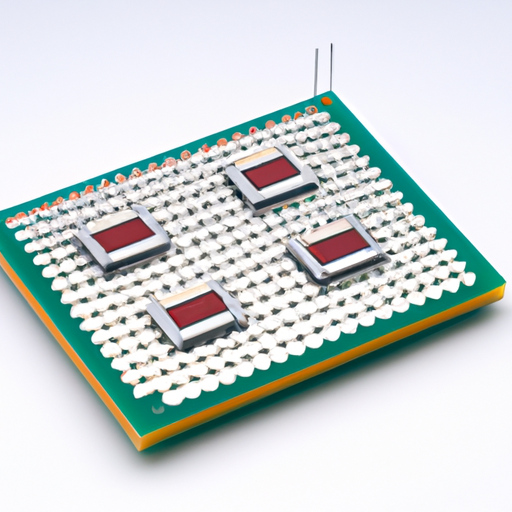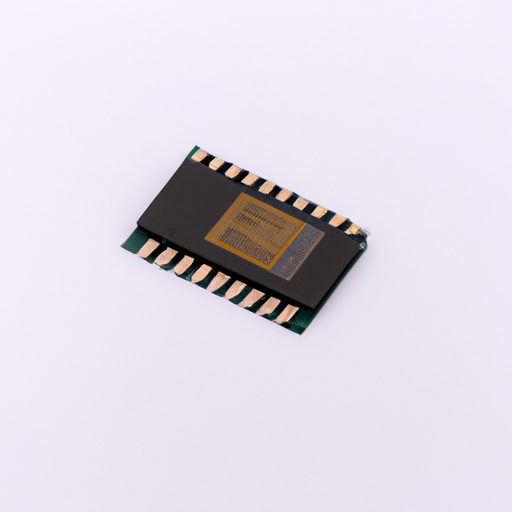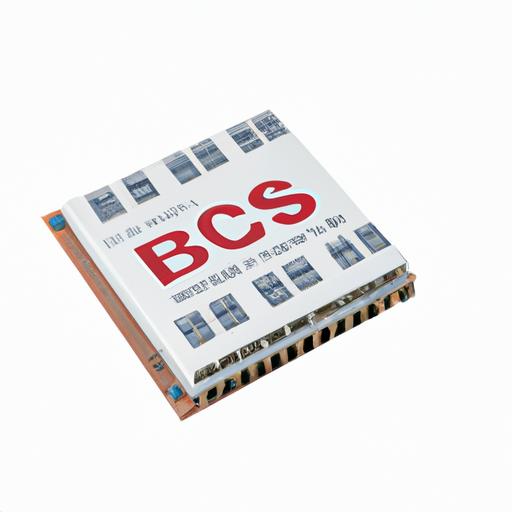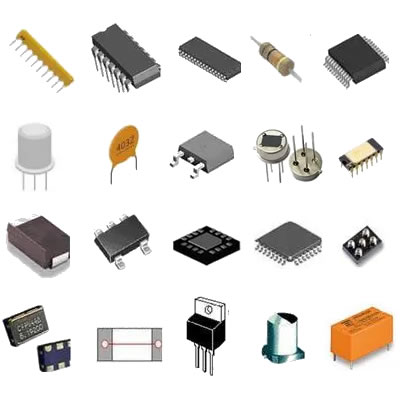Semiconductor Manufacturing International Corporation
Semiconductor Manufacturing International Corporation: A Key Player in the Global Semiconductor Landscape
I. Introduction
The semiconductor industry is a cornerstone of modern technology, powering everything from smartphones to advanced computing systems. As the demand for electronic devices continues to surge, the importance of semiconductor manufacturing in the global economy has never been more pronounced. Among the key players in this industry is Semiconductor Manufacturing International Corporation (SMIC), a company that has carved out a significant niche in the semiconductor landscape. This blog post will explore SMIC's history, technological capabilities, market presence, challenges, and future outlook.
II. Company Background
A. Founding and Early Years
Founded in 2000, SMIC emerged as a response to the growing need for semiconductor manufacturing in China. The company's initial goals were to provide high-quality manufacturing services to local and international clients while fostering the development of China's semiconductor industry. In its early years, SMIC focused on establishing a robust manufacturing infrastructure and building a reputation for reliability and quality.
B. Growth and Expansion
Over the years, SMIC has achieved several key milestones that have propelled its growth. The company expanded its manufacturing capabilities through strategic partnerships and collaborations with leading technology firms. These alliances have enabled SMIC to access advanced technologies and enhance its production processes. As a result, SMIC has become one of the largest semiconductor foundries in the world, serving a diverse range of clients across various sectors.
C. Current Status
Today, SMIC holds a prominent position in the semiconductor market. The company has reported steady financial performance, with revenues reflecting the increasing demand for semiconductor products. As of 2023, SMIC continues to invest in expanding its manufacturing capacity and enhancing its technological capabilities, solidifying its status as a key player in the global semiconductor landscape.
III. Technology and Manufacturing Capabilities
A. Overview of Semiconductor Manufacturing Processes
SMIC employs a range of semiconductor manufacturing processes, including wafer fabrication, packaging, and testing. Wafer fabrication involves the creation of semiconductor wafers, which are then processed to form integrated circuits. The packaging phase involves encasing the chips in protective materials, while testing ensures that the final products meet quality standards.
B. Advanced Technologies Employed by SMIC
SMIC has made significant strides in adopting advanced manufacturing technologies. The company has successfully developed 7nm and 5nm process nodes, which are critical for producing high-performance chips. These advancements are complemented by ongoing research and development initiatives aimed at pushing the boundaries of semiconductor technology.
C. Comparison with Global Competitors
In the competitive landscape of semiconductor manufacturing, SMIC faces formidable rivals such as Taiwan Semiconductor Manufacturing Company (TSMC) and Intel. While TSMC is known for its cutting-edge technology and extensive client base, SMIC differentiates itself through its focus on serving the Chinese market and its commitment to providing cost-effective solutions. This unique selling proposition has allowed SMIC to establish a loyal customer base and gain market share.
IV. Market Segments and Applications
A. Key Markets Served by SMIC
SMIC serves a diverse array of markets, including consumer electronics, automotive, and telecommunications. In the consumer electronics sector, SMIC manufactures chips for smartphones, tablets, and other devices. The automotive industry relies on SMIC for semiconductor solutions that power advanced driver-assistance systems and electric vehicles. Additionally, SMIC plays a crucial role in the telecommunications sector, providing chips for networking equipment and infrastructure.
B. Role of SMIC in the Supply Chain
SMIC's partnerships with major technology companies underscore its importance in the global semiconductor supply chain. By collaborating with industry leaders, SMIC contributes to the development of innovative products and solutions. The company's ability to provide reliable manufacturing services has made it a preferred partner for many tech firms, further solidifying its position in the market.
V. Challenges and Opportunities
A. Regulatory and Geopolitical Challenges
Despite its successes, SMIC faces several challenges, particularly in the realm of regulation and geopolitics. The ongoing U.S.-China trade tensions have led to export restrictions that impact SMIC's ability to access certain technologies and markets. These challenges necessitate strategic planning and adaptability to navigate the complex regulatory landscape.
B. Technological Challenges
The semiconductor industry is characterized by rapid technological advancements, and SMIC must continuously innovate to remain competitive. The company faces stiff competition in advanced manufacturing processes, requiring ongoing investment in research and development. To maintain its market position, SMIC must prioritize technological innovation and efficiency.
C. Opportunities for Growth
Despite the challenges, SMIC has numerous opportunities for growth. The increasing demand for semiconductors in emerging markets presents a significant avenue for expansion. Additionally, the company's commitment to investing in research and development positions it well to capitalize on new technologies and applications, further enhancing its competitive edge.
VI. Future Outlook
A. Predictions for the Semiconductor Industry
The semiconductor industry is poised for continued growth, driven by trends such as the rise of artificial intelligence, the Internet of Things (IoT), and 5G technology. As these technologies become more prevalent, the demand for advanced semiconductor solutions will increase, creating opportunities for companies like SMIC.
B. SMIC's Strategic Plans
Looking ahead, SMIC has outlined strategic plans for the next decade. The company aims to enhance its manufacturing capabilities and expand its product offerings to meet the evolving needs of its clients. Investments in technology and infrastructure will be critical to achieving these goals, ensuring that SMIC remains at the forefront of the semiconductor industry.
VII. Conclusion
In conclusion, Semiconductor Manufacturing International Corporation (SMIC) plays a vital role in the semiconductor industry, contributing to the global technology landscape. With a rich history, advanced manufacturing capabilities, and a commitment to innovation, SMIC has established itself as a key player in the market. While challenges such as regulatory hurdles and technological competition persist, the company's strategic plans and growth opportunities position it for continued success in the years to come. As the semiconductor industry evolves, SMIC's contributions will be instrumental in shaping the future of technology.
VIII. References
- Semiconductor Manufacturing International Corporation (SMIC) official website
- Industry reports from market research firms
- Publications on semiconductor technology and market trends
- News articles covering recent developments in the semiconductor industry
This blog post provides a comprehensive overview of SMIC, highlighting its significance in the semiconductor industry and its potential for future growth.







